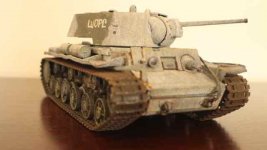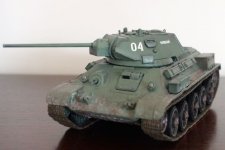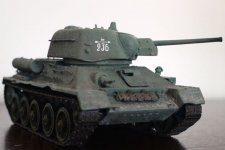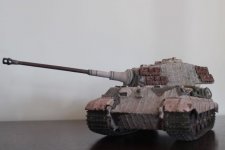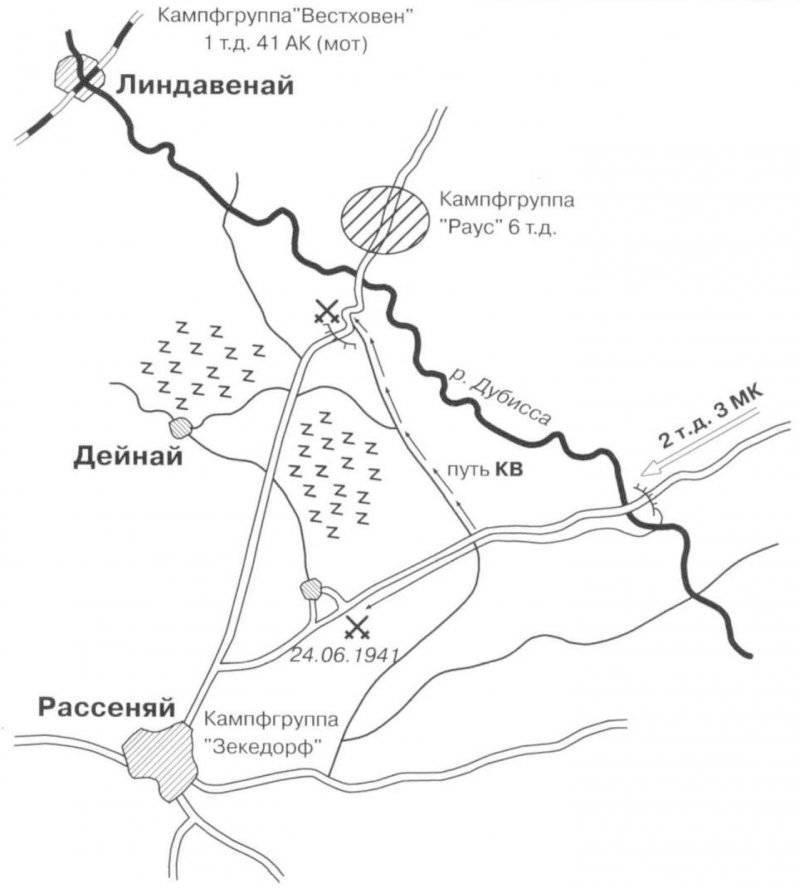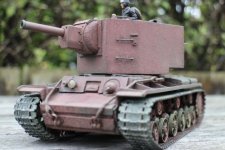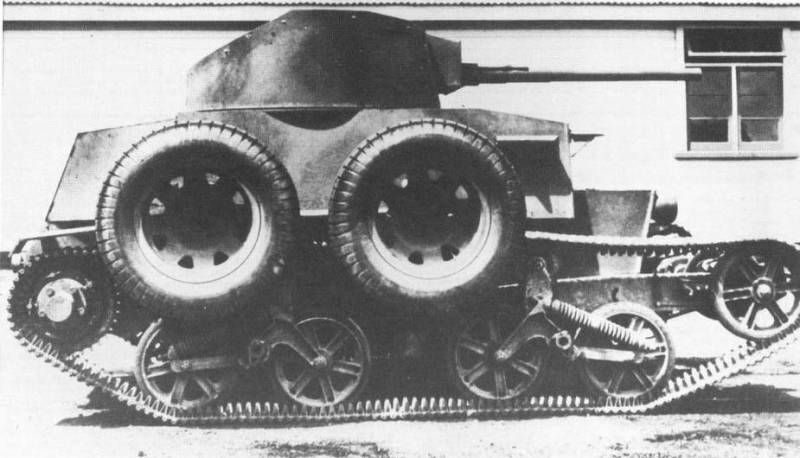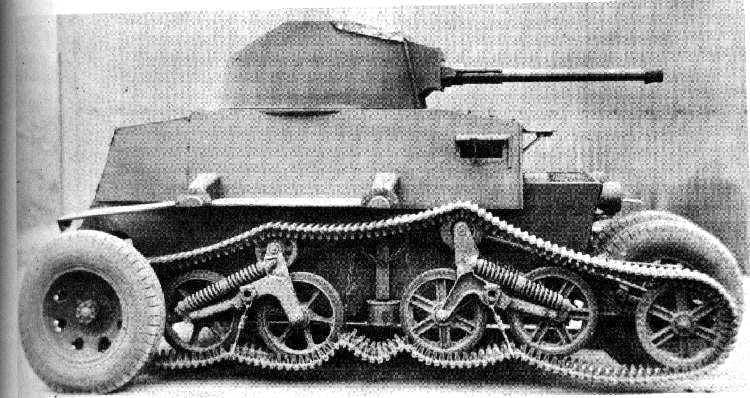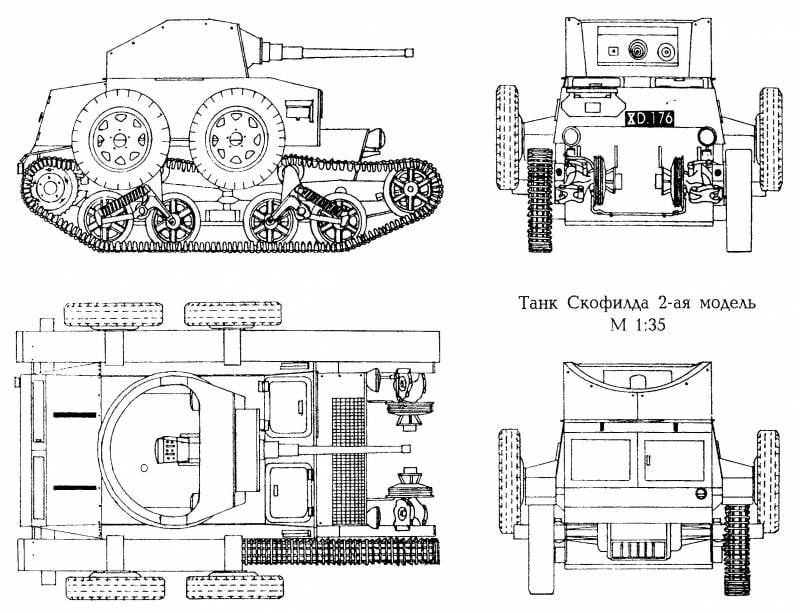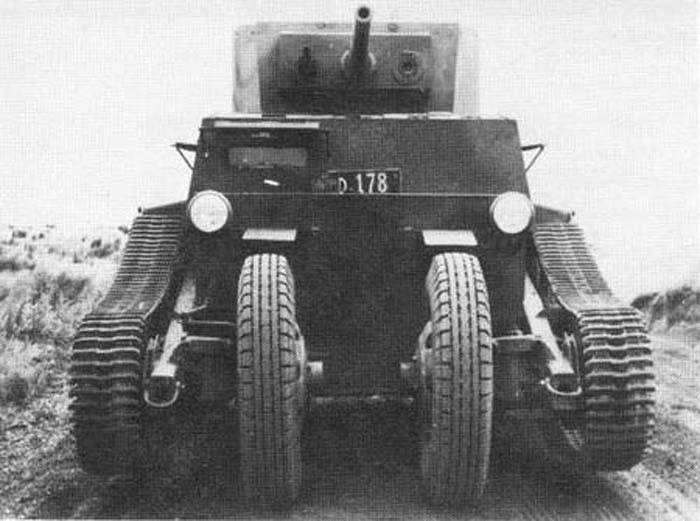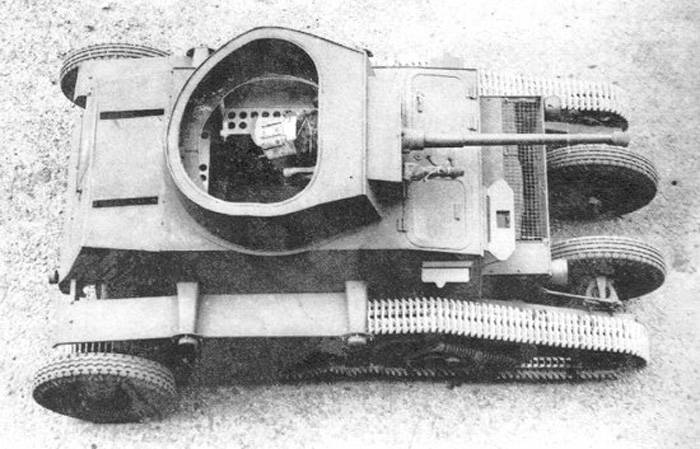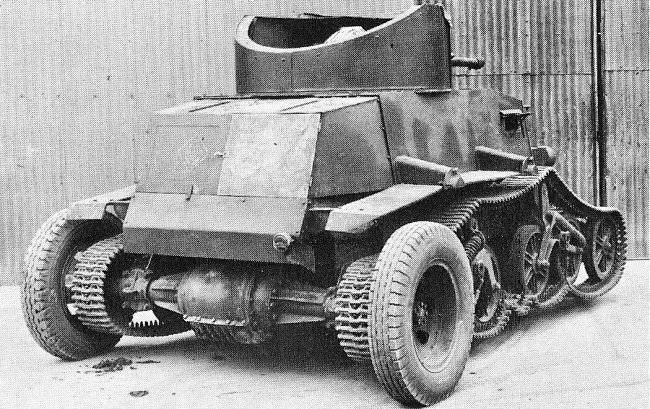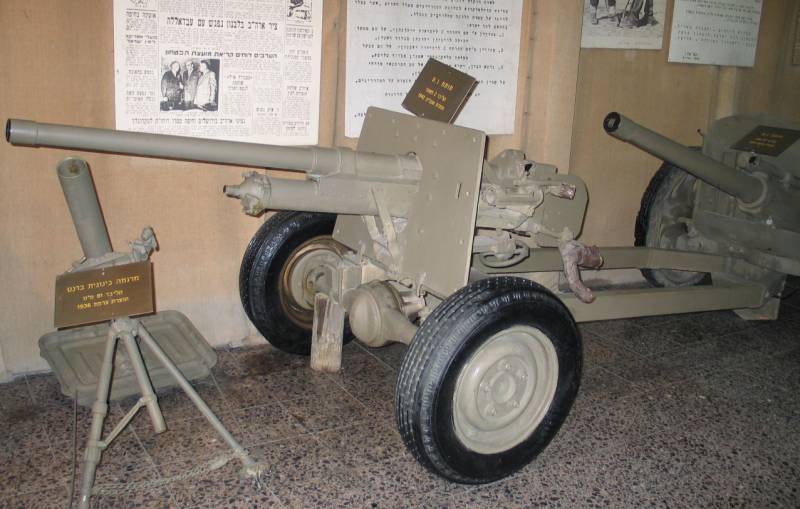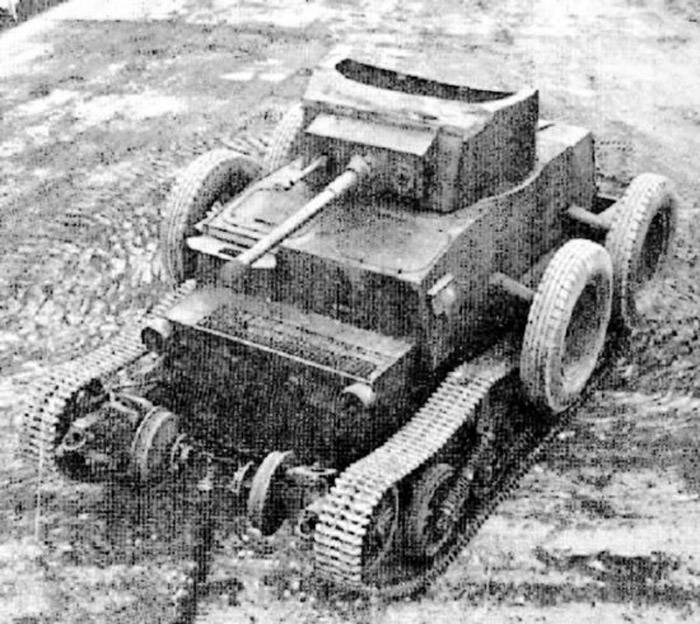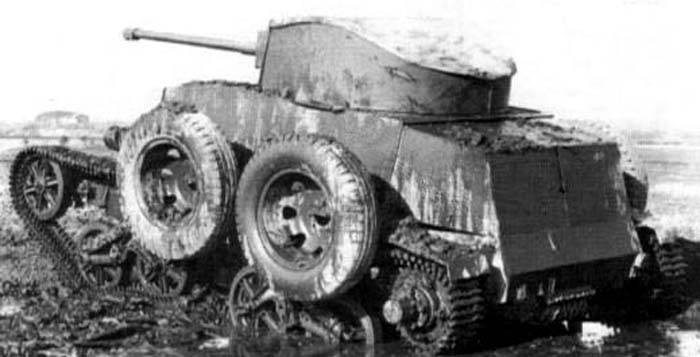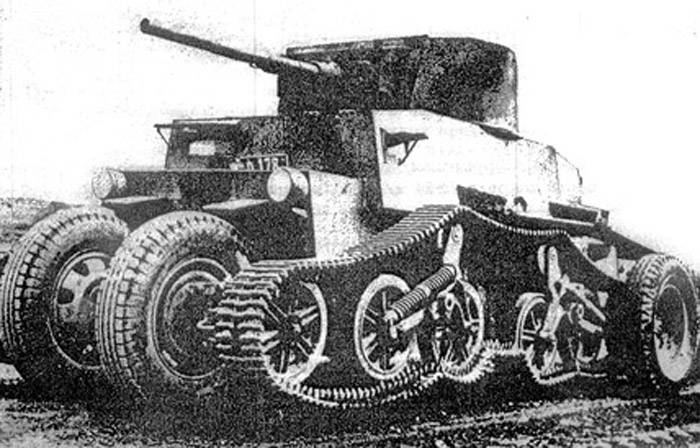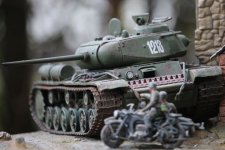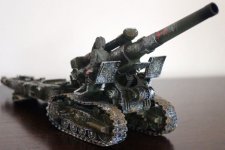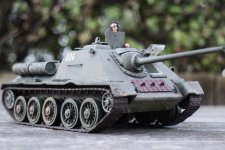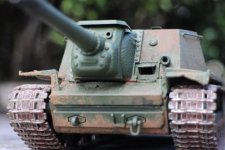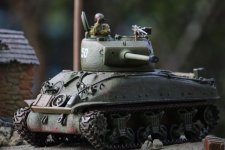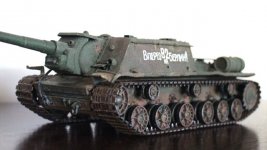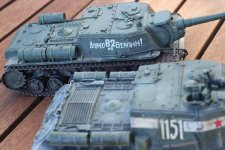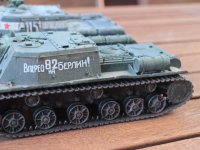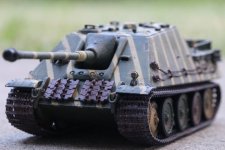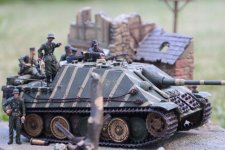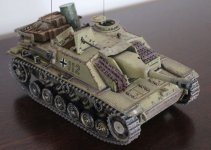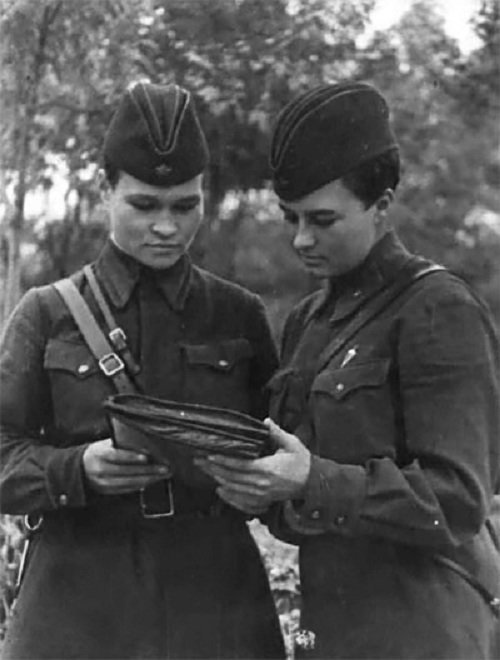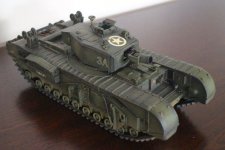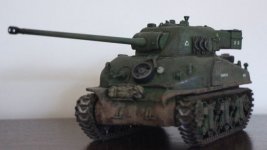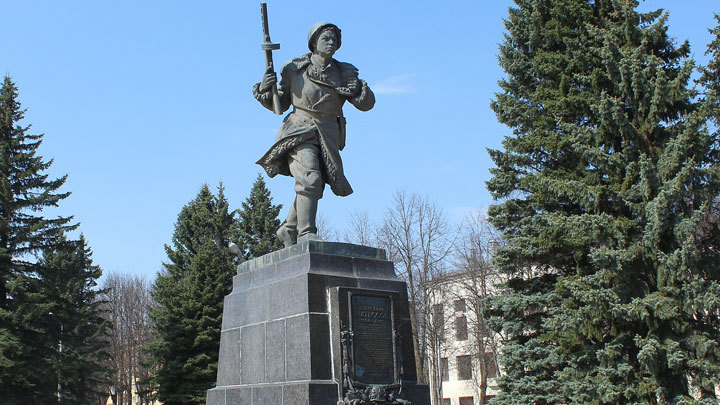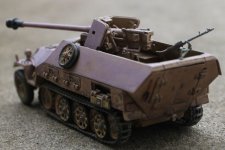tank
Specialist
- Joined
- Mar 24, 2012
- Messages
- 311
Gudz Pavel_Danilovich

Гудзь Павел_Данилович
https://en.topwar.ru/165493-pavel-gudz-odin-kv-protiv-18-tankov-protivnika.html

Lieutenant Gudz on his KV-1 tank moves to Red Square to participate in the Parade on November 7, 1941.
The Battle of Moscow.
1941, November, the village of Nefedyevo. The nearest point to Moscow. The group of the Nazis consisting of 18 tanks, a pair of artillery batteries and the infantry accompanying them occupied the village. The next morning Germans were planning move on and would crush a fairly thin defence line before Moscow.
Officially, from the memoirs of General Beloborodov:
"This was the most crucial moment. I reported to the chief of the army about the situation on the site of the 258th rifle regiment and received permission to use one of the rifle brigades eliminate the danger situation . The decision was as follows: the 40th rifle and 17th tank brigades shall attack an enemy who broke into Nefedyevo at night , and restore the position. "
The nuance was that at that time the force of 17 tank brigade was only 1 (one) KV-1 tank. So it was ordered to Pavel Hudz somehow to prevent a German tank attack.
Pavel Gudz himself in 2006 recalled it like this:
“At night, the courier handed the package from the Brigade commander:“ In Nefedyev, the enemy tank column — 18 vehicles in total. I order you to destroy the tank column by 8:00am on the 6 December. "
The battalion commander looked at the map:” This is Khimki... and this is Nefedyevo. Germans have eighteen tanks ... We have only one KV in our battalion. It is yours, Pavel. ... If we don’t shatter the tank column, tomorrow it will roll into Moscow. All I can do for you... I will ask the gunners to support you.”
There weren’t many options for Pavel Gudz:
1. Attack in the forehead the Nefedyevo. In this case the KV would burn a couple of Germans panzers but German artillerymen, infantry and tankers would burn the KV for sure. Not good.
2. Dig a tank and disguise it and than act from an ambush. (That’s how tanker Kolobanov worked. But Kolobanov had a choice for an ambush - the terrain was swampy, the tanks couln’t go everywhere and it was clear for Kolobanov where to set an ambush) The ambush wouldn’t work here as 18 German tanks here on the hard ground and they will be able to freely maneuver to bypass the ambush and then burn the KV.
3. Using the darkness to come closer to the village and take an advantageous position. Atack the panzers in the very early mornning before the Germans tank crews wake up. This option was offered by the battalion commander Khorin. He also agreed with the artillery battery commander that the artilery would shoot randomly in the distance to cover up the noise of the tank engine and would not particularly disturbing the Germans in the village.
The third option seemed to be the most suitable.
The tankers prepared for the fight in a thorough manner. Refueled the tank to the eyeballs. They pulled out everything that was possible from the tank - to make room for ammunition - duffel bags, and personal items, gas masks and so on. Even the belts and holsters were removed. Tankers filled the tank with 125 shells in total. For the four KV machine guns they took 48 disks of bullets. Stocked up themselves with grenades just in case.
They advanced to the village in the dark. The tank commander walked in front of the tank and the driver was guided by a black silhouette on the snow and by the light of a flashlight covered by a blue filter. The artillery began to sluggishly shooting. The Germans were alarmed and a few light rockets flew up the night sky but the shells bursted the hell knows where it was completely harmless so the Germans calmed down.
The infantry in trenches on the front joked sadly when they saw a lonely tank: “To Berlin?”
"Sure. To Berlin. We’ll only go to Nefedyevo first,” Gudz replied. The KV at low speeds literally crept to the outskirts of the village.
According to a number of signs, the Germans in the village were sure of tomorrow’s victory - in one publication it was indicated that drunk voices came from the village. The Germans did not conduct any surveillance and guard services. Panzers did not warm up at night and no one was on duty by the panzers. The KV tank’s approach to the outskirts of the village and it got the most advantageous position unnoticed.
When the sky lightened the Lieutenant Starykh set on fire first German tank with the very first shell. A hefty fire additionally illuminated the German panzers.
The Russian tankers began to shoot at the maximum speed realizing that the more empty tanks they would burn the easier it would be when the Germans crews nevertheless get to their panzers.
When eventually the German tankers started to run down from the hut the three tanks were already burning.
The first German shell hit the KV turret when the Fourth and Fifth tanks were lit by Starykh. According to Hudz’s recollections when the German began shooting at KV the impression was as if tankers were sitting in an iron barrel on which someone was hitting with a sledgehammer.
The tankers were stunned and slashed over the faces and hands with scale. The shells did not penetrate the armor. The blows fell out of the bag, everything rang and rattled. Gudz replaced Sablin. He was snatching shells from the mounts and throwing them into the breech of the gun.
By this time, the Russian artillery battery, covering his tank with noise at night was already firing at the village. The infantry seeing the cheerful beginning of the day yelled “Hurray!” and went on the attack.
The Germans were completely unprepared for this. They panicked.
They arrived to win and now then they are suddenly beaten and attacked. They were shooting at KV from everything that could shoot the KV in response hit from their machine guns and cannon simultaneously crushing infantrymen with caterpillars.
Unable to withstand the Nazis began to withdraw from Nefediev. Of the 18 tanks that arrived in the village, eight were able to retreat and the ten panzers burned.
The fighting compartment was littered with shells, everything was gray with smoke, there were no cartridges for machine guns at all, but fortunately things did not come to the handguns and grenades. And when the crew got out of the tank with difficulty, they all gasped — all zips, a trench tool, spare tracks, wings — everything was washed away. The KV stood naked, and was not white anymore as it should be in winter disguise. Now the tank wasn’t even green - but some sort of gray-spotted from bullets and shells. On the armor there were clearly visible some 29 marks from the shells.
In total, during this three-hour battle, the KV crew, infantrymen and artillerymen destroyed eight tanks, two anti-tank batteries and about 400 Germans.


Гудзь Павел_Данилович
https://en.topwar.ru/165493-pavel-gudz-odin-kv-protiv-18-tankov-protivnika.html

Lieutenant Gudz on his KV-1 tank moves to Red Square to participate in the Parade on November 7, 1941.
The Battle of Moscow.
1941, November, the village of Nefedyevo. The nearest point to Moscow. The group of the Nazis consisting of 18 tanks, a pair of artillery batteries and the infantry accompanying them occupied the village. The next morning Germans were planning move on and would crush a fairly thin defence line before Moscow.
Officially, from the memoirs of General Beloborodov:
"This was the most crucial moment. I reported to the chief of the army about the situation on the site of the 258th rifle regiment and received permission to use one of the rifle brigades eliminate the danger situation . The decision was as follows: the 40th rifle and 17th tank brigades shall attack an enemy who broke into Nefedyevo at night , and restore the position. "
The nuance was that at that time the force of 17 tank brigade was only 1 (one) KV-1 tank. So it was ordered to Pavel Hudz somehow to prevent a German tank attack.
Pavel Gudz himself in 2006 recalled it like this:
“At night, the courier handed the package from the Brigade commander:“ In Nefedyev, the enemy tank column — 18 vehicles in total. I order you to destroy the tank column by 8:00am on the 6 December. "
The battalion commander looked at the map:” This is Khimki... and this is Nefedyevo. Germans have eighteen tanks ... We have only one KV in our battalion. It is yours, Pavel. ... If we don’t shatter the tank column, tomorrow it will roll into Moscow. All I can do for you... I will ask the gunners to support you.”
There weren’t many options for Pavel Gudz:
1. Attack in the forehead the Nefedyevo. In this case the KV would burn a couple of Germans panzers but German artillerymen, infantry and tankers would burn the KV for sure. Not good.
2. Dig a tank and disguise it and than act from an ambush. (That’s how tanker Kolobanov worked. But Kolobanov had a choice for an ambush - the terrain was swampy, the tanks couln’t go everywhere and it was clear for Kolobanov where to set an ambush) The ambush wouldn’t work here as 18 German tanks here on the hard ground and they will be able to freely maneuver to bypass the ambush and then burn the KV.
3. Using the darkness to come closer to the village and take an advantageous position. Atack the panzers in the very early mornning before the Germans tank crews wake up. This option was offered by the battalion commander Khorin. He also agreed with the artillery battery commander that the artilery would shoot randomly in the distance to cover up the noise of the tank engine and would not particularly disturbing the Germans in the village.
The third option seemed to be the most suitable.
The tankers prepared for the fight in a thorough manner. Refueled the tank to the eyeballs. They pulled out everything that was possible from the tank - to make room for ammunition - duffel bags, and personal items, gas masks and so on. Even the belts and holsters were removed. Tankers filled the tank with 125 shells in total. For the four KV machine guns they took 48 disks of bullets. Stocked up themselves with grenades just in case.
They advanced to the village in the dark. The tank commander walked in front of the tank and the driver was guided by a black silhouette on the snow and by the light of a flashlight covered by a blue filter. The artillery began to sluggishly shooting. The Germans were alarmed and a few light rockets flew up the night sky but the shells bursted the hell knows where it was completely harmless so the Germans calmed down.
The infantry in trenches on the front joked sadly when they saw a lonely tank: “To Berlin?”
"Sure. To Berlin. We’ll only go to Nefedyevo first,” Gudz replied. The KV at low speeds literally crept to the outskirts of the village.
According to a number of signs, the Germans in the village were sure of tomorrow’s victory - in one publication it was indicated that drunk voices came from the village. The Germans did not conduct any surveillance and guard services. Panzers did not warm up at night and no one was on duty by the panzers. The KV tank’s approach to the outskirts of the village and it got the most advantageous position unnoticed.
When the sky lightened the Lieutenant Starykh set on fire first German tank with the very first shell. A hefty fire additionally illuminated the German panzers.
The Russian tankers began to shoot at the maximum speed realizing that the more empty tanks they would burn the easier it would be when the Germans crews nevertheless get to their panzers.
When eventually the German tankers started to run down from the hut the three tanks were already burning.
The first German shell hit the KV turret when the Fourth and Fifth tanks were lit by Starykh. According to Hudz’s recollections when the German began shooting at KV the impression was as if tankers were sitting in an iron barrel on which someone was hitting with a sledgehammer.
The tankers were stunned and slashed over the faces and hands with scale. The shells did not penetrate the armor. The blows fell out of the bag, everything rang and rattled. Gudz replaced Sablin. He was snatching shells from the mounts and throwing them into the breech of the gun.
By this time, the Russian artillery battery, covering his tank with noise at night was already firing at the village. The infantry seeing the cheerful beginning of the day yelled “Hurray!” and went on the attack.
The Germans were completely unprepared for this. They panicked.
They arrived to win and now then they are suddenly beaten and attacked. They were shooting at KV from everything that could shoot the KV in response hit from their machine guns and cannon simultaneously crushing infantrymen with caterpillars.
Unable to withstand the Nazis began to withdraw from Nefediev. Of the 18 tanks that arrived in the village, eight were able to retreat and the ten panzers burned.
The fighting compartment was littered with shells, everything was gray with smoke, there were no cartridges for machine guns at all, but fortunately things did not come to the handguns and grenades. And when the crew got out of the tank with difficulty, they all gasped — all zips, a trench tool, spare tracks, wings — everything was washed away. The KV stood naked, and was not white anymore as it should be in winter disguise. Now the tank wasn’t even green - but some sort of gray-spotted from bullets and shells. On the armor there were clearly visible some 29 marks from the shells.
In total, during this three-hour battle, the KV crew, infantrymen and artillerymen destroyed eight tanks, two anti-tank batteries and about 400 Germans.






